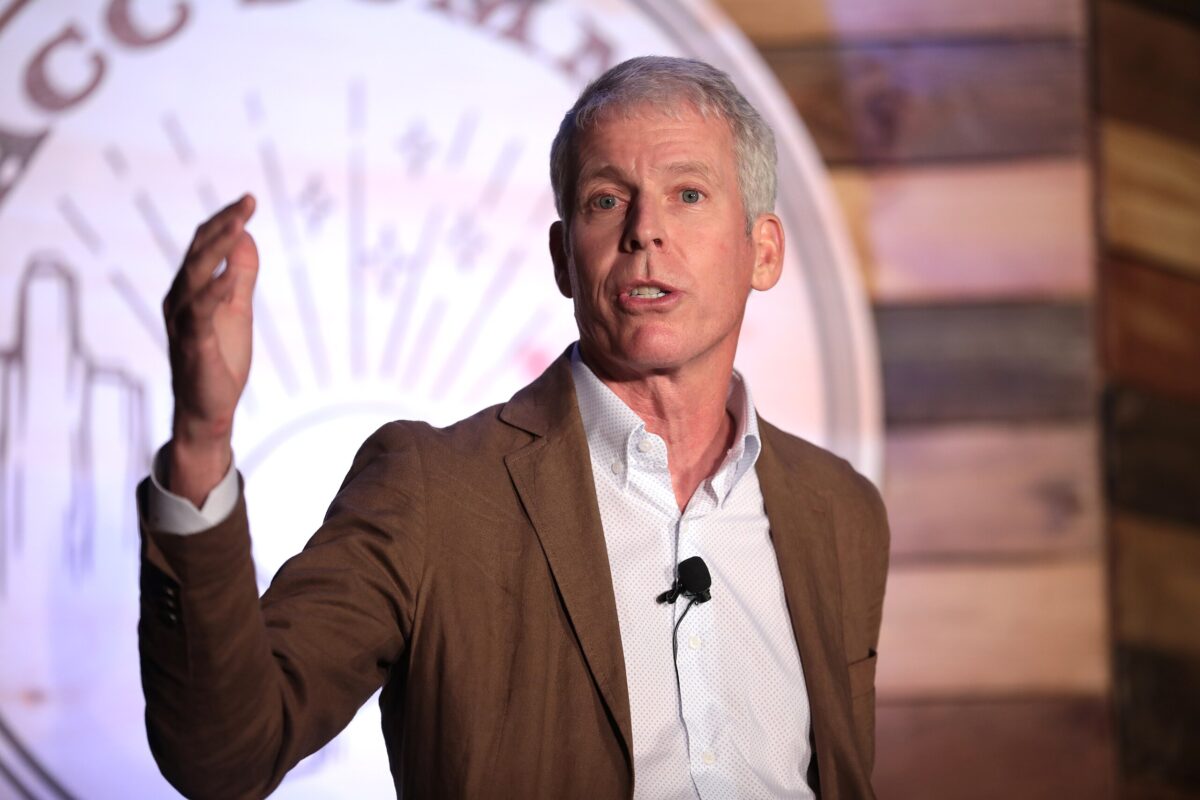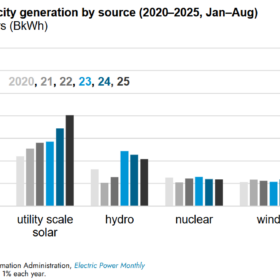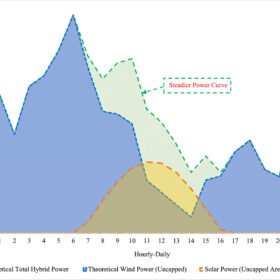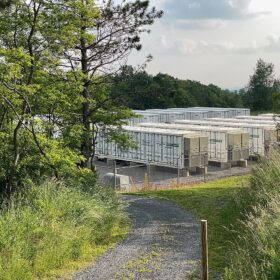While the global transition of energy systems away from fossil fuels and towards renewable energy, electrification and distributed energy solutions is being increasingly accepted as inevitable, that does not mean that it is either easy or simple.
There are few regions in the United States where this is more true than in New England. While the overall region lags well below the national average in terms of solar and wind deployment, several states have pushed bold policies and are at times among the national leaders in terms of sophisticated approaches to system transformation.
Yesterday’s New England Solar and Storage Symposium by Greentech Media took a deeper look at the policy and market conditions of the region, without shying away from the very real challenges that New England faces.
Distributed solar in the crosshairs
For renewable energy, geography matters. New England has a wet climate with poor year-round solar radiation, and is one of the most densely populated regions in the United States. Both population pressures and an over-representation of affluent residents who are not used to seeing energy infrastructure has hindered land-based and even offshore wind.
And while the clouds, the density and historical settlement patterns also present challenges to large-scale PV projects, New England has excelled in deployment of distributed solar. Massachusetts and Vermont in particular boast some of the highest levels of residential and commercial installations on a per-capita basis in the United States.
This has been backed by aggressive policies, and one entire panel was dedicated to Massachusetts’ SMART program, a declining block grant incentive program designed to replace Solar Renewable Energy Credits (SRECs) and facilitate Governor Charlie Baker’s goal to deploy an additional 1.6 GW of solar on top of the 1.6 GW under the previous program.
SMART is nothing if not complex. The basic program design is a block grant incentive with adders for various kinds of installations, including carports, projects with municipal off-takers, and projects that incorporate energy storage.
And while today’s panelists repeated the praise that the program has received from many if not all in Massachusetts’ fragmented and cantankerous solar industry, uncertainty is a problem. An initial auction will be held to set prices for incentives, and the combination of not knowing what incentive levels will be or what prices modules will be available at through the Section 201 process clearly has many developers worried.
SMART also comes at a time when Massachusetts’ residential solar market is on the decline, as one of a number of Northeastern state markets where much of the “first adopter” demographic has been exhausted. A presentation by GTM Research Solar Analyst Allison Mond looked at this trend, noting the role of pull-back by national installers Tesla/SolarCity and Vivint.
And while the residential solar industry continues to evolve, in the long run there are no easy answers to customer acquisition. Massachusetts must also deal with restrictive net metering caps, and a number of distribution circuits that are nearing saturation with distributed solar.
Community solar on the rise
One answer for continued deployment is community solar. But if distributed solar has been complicated, for community solar this is even more of a problem. On the symposium’s community solar panel, Laura Pagliarulo of CleanChoice Energy stressed that the customer experience with these projects must be “seamless”, and that for many customers the complexity of deals has been a central barrier.
Pagliarulo says that some of this comes from demands of financiers being in conflict with the interests of customers. On the bright side Massachusetts companies are in a good position to learn from these challenges, as the state has one of the largest and most advanced community solar markets in the United States.
This is expected to continue under the SMART program, with Nexamp VP of New Market Development Ben Downing stating that the program is something that his company “can develop projects under”.
Energy storage makes its debut
New England is also a leading nation for deployment of energy storage, and this again is driven by policy. Massachusetts is one of four states in the nation to issue an energy storage procurement mandate to utilities.
Along with the adder for solar projects with energy storage in the SMART program, this is expected to create a vibrant market over the next few years. “We are going to put storage in every (solar) project that we do,” stated EDF Renewable Energy’s Tom Leyden during a panel discussion.
However, the issue of getting paid for the services provided by energy storage is as thorny in New England as it is elsewhere, with regulators often settling for providing incentives or mandates while they attempt to tackle the problems of what the many services provided by batteries are worth to the grid.
In terms of policy and market evolution, pilot projects have been important. Some of these are breaking new ground in terms of deployment, such as Vermont utility Green Mountain Power’s deal to supply its customers with Tesla battery systems, through a variety of use options and ownership structures to meet the needs of both customers and utilities.
The long view: grid modernization
Beyond mere deployment, a central issue identified by Todd Olinsky-Paul of Clean Energy States Alliance is that technology has advanced faster than regulatory and policy structures.
Regulators are struggling to keep up, and one state that has taken on the challenge of an evolving grid is Rhode Island. The state has launched the Power Sector Transformation initiative, which will address both grid modernization and the utility’s business model.
In taking on this task Rhode Island is following the trail blazed by New York’s Reforming the Energy Vision (REV), and also trying to avoid some of the pitfalls of that process.
This ambitious path contrasts with Rhode Island’s paltry deployment of wind and solar. And as Rhode Island plans, in many cases Vermont is doing. With the 2nd-most aggressive renewable energy goal in the nation and one of the highest wind and solar penetration levels at around 1/3 of annual demand, Vermont is no stranger to renewable energy integration.
This is especially true at Green Mountain Power. “Vermont has done a very interesting job with this issue of transformation,” notes the utility’s CEO, Mary Powell. “It really encouraged the utility to think in terms of this issue of carbon.”
Powell says Green Mountain Power is already working on aggregating customer loads, including heating and cooling systems. “We’re about aggregating anything, especially as it has load controls”. She also notes the state’s additional incentives for non-wires alternatives to assisting with power delivery.
Powell is a refreshing face among utility leaders. She appears utterly unafraid of customer-owned distributed generation and the evolution of the grid towards distributed resources. But she also notes that there is no shortage of opporutinities for utility investments. “We have an incredibly aged infrastructure in New England,” Powell observed.
In fact, Powell articulated what appears to be her central question: “How we will “completely turn the energy infrastructure inside out?”
This content is protected by copyright and may not be reused. If you want to cooperate with us and would like to reuse some of our content, please contact: editors@pv-magazine.com.









Or, under a regimen where the utilities continue to exert regulatory capture of the Massachusetts DPU and the legislature, the alternative is for people either desiring solar PV or having it, whether for their homes or for their business, to begin to hoard electrons. By that I mean to change the energy resources of their homes and businesses so that, as much as possible, they are self-sustaining, and draw upon grid resources only when necessary and, hopefully, at optimal times of day for energy price.
Such can be a combination of building out additional solar PV, adding storage, adding land-based wind where the entity can, and adding in the smarter inverters and other controls which make management of this energy easy.
Massachusetts talks a good talk, and sets good goals, but I have yet to see the Commonwealth dollars advocated to the degree that we and businesses know they really mean what they say.